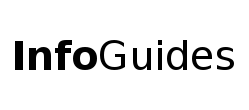
 | University Libraries
| University Libraries
Students will be able to investigate how information sources work together around a topic. (Scholarship as Conversation/Research as Inquiry)
Some skills that teach to this outcome:
Activity 1:
Outcome:
SIFT detective – SIFT discovery – using the methods of SIFT, students will go through an article provided by the instructor to complete a Microsoft form walking them through the methods. Class will then review with instructor. This part can be done individually or in groups. Part two, within a second Microsoft form, using an article they have found for their research assignment, students will individually use SIFT to evaluate their source.
Skills:
Evaluation Tools: SIFT, RADAR, CRAAP, News You Can Use
|
|
Successful |
Developing |
Undeveloped |
|
Completed the form 1 |
Able to complete with correct information |
Completed with vague understanding of SIFT |
Was unable to follow SIFT |
|
Completed form 2 |
Was able to find an article and successfully apply SIFT |
Was able to find an article and mostly apply SIFT |
Was unable to apply SIFT successfully/did not complete the assignment |
Activity 2
Outcome: Students compare and contrast information in order to create connections across information.
Skills:
In groups of four or five, students are given a series of cards with images of similar types of objects, e.g. mythical/folkloric monsters or candies. Each card has an image of the item and a brief written description. Students create groupings and categories of the items. These groupings are at the discretion of each group, but every item must fit into at least one group. For example, groupings for candy might be chocolates and fruit-based, or bars, pieces, want round-shaped. After students share out their groupings, a class discussion follows about how this compares to grouping and synthesizing sources in research.
Assessment Option:
Students complete a worksheet that asks them to categorize or group their sources for their research project.
Rubric:
|
Criteria |
Doesn’t Meet Criteria |
Partially Meets Criteria |
Meets Criteria |
|
Definition of synthesis |
Students does not correctly define synthesis |
- |
Student correctly outlines a definition of synthesis |
|
List of themes |
Student does not identify themes or their list of themes does not synthesize sources (I.e., their list of themes includes each of their sources in its own theme) or only lists one theme |
Student defines themes, but lists categories of sources (i.e., scholarly, popular) instead of specific sources |
Student lists themes for their paper, grouping sources accordingly |
Activity 3
Outcome: Students identify how an article is situated in the scholarly conversation.
Skills:
After locating a source of interest for their research, students use Web of Science (or Google Scholar) to identify how many times it's been cited. In pairs, students then discuss the relevance and importance of the number of times it's been cited. Students then complete a one-minute paper or exit ticket related to their source.
Assessment Option:
How many times was your source cited?
What is one thing that number may tell you about your source?
What is one thing you might need to do look up to determine what that number means in relation to your article or its discipline?
Scoring Criteria Suggestion:
|
|
Successful |
Developing |
Undeveloped |
|
What the times cited means |
Based on the number of times cited, the student draws a logical inference about the source. |
The inference about the source is mismatched with the times cited or discipline. |
No answer provided. |
|
More research |
The student identifies a reasonable strategy to determine the meaning of the times the source was cited. |
The student’s strategy is unreasonable in scale or isn’t aligned with disciplinary best practices. |
No answer provided. |
Activity 4
Outcome: Students will be able to distinguish types of sources.
Skills:
Students will look at three print versions of publications: A peer-reviewed journal, a bound conference proceeding, or a trade magazine. They do not need to be from the same discipline because the goal is to look at the physical differences between the publication types.
In small groups (3-5 students) students will look at the publications and start filling out a worksheet that looks like this:
|
Characteristics |
Scholarly, Peer Reviewed |
Conference Proceeding |
Trade |
|
Purpose or Intent |
|
|
|
|
Audience |
|
|
|
|
Creator |
|
|
|
|
Language (Tone) |
|
|
|
|
References |
|
|
|
|
Accountability or Quality Control |
|
|
|
After 15-20 minutes of small group work, the class will discuss each type of publication and the various characteristics.
Assessment Option 1:
The instructor can mark how many groups successfully identified each publication type.
Scoring Option:
Assessment Option 2:
The following One-Minute Paper:
Rubric:
|
|
No Points |
1 point |
2 points |
|
Characteristics of scholarly journals |
Did not put any characteristics |
Put 1-2 characteristics |
Put at least 3 characteristics |
|
Reasons for using a conference proceeding |
Gave no reasons |
Gave 1 reason |
Gave at least 2 reasons |
|
Difference between trade and scholarly publications |
No response |
Gave a response but might not be accurate |
Gave at least 1 difference |
Ask a Librarian | Hours & Directions | Mason Libraries Home
Copyright © George Mason University